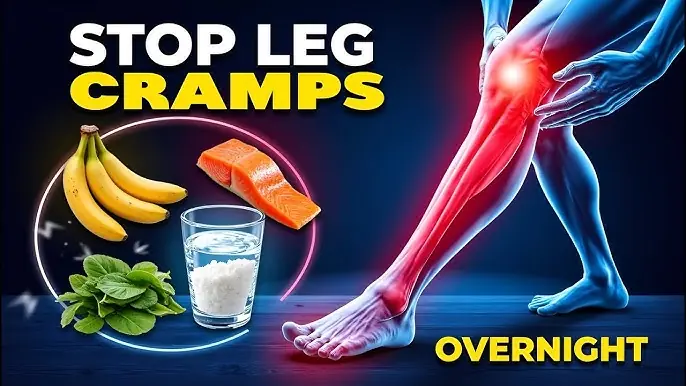
All lupus cases may be linked to a common virus, study finds

A groundbreaking new study has uncovered a compelling and previously elusive connection between the Epstein–Barr virus (EBV)—a widespread virus that infects the majority of the global population—and the onset of lupus, a chronic autoimmune disease. This discovery not only resolves a long-standing scientific mystery but also opens fresh pathways for understanding, diagnosing, and potentially treating lupus, which impacts millions of people worldwide. The findings represent a significant step forward in unraveling how viral infections can spark dysfunctional immune responses in genetically susceptible individuals.
Key Takeaways
-
The Epstein–Barr virus (EBV) is strongly implicated as a trigger for lupus.
-
EBV appears to reprogram immune cells, prompting the body to attack its own tissues.
-
This breakthrough could transform future lupus treatment and prevention strategies.
Unraveling the Lupus Mystery
For decades, the causes of lupus have puzzled researchers. Although scientists have long suspected a combination of genetic vulnerability, hormonal influences, and environmental triggers, pinpointing a definitive cause has been remarkably challenging. EBV has repeatedly appeared as a potential suspect because of its near-universal prevalence and its links to other autoimmune disorders. Yet, the exact mechanism by which the virus might contribute to lupus remained uncertain—until now.
The new study provides strong evidence that EBV may initiate the autoimmune chain reaction that characterizes lupus. By mapping how infected immune cells behave differently, researchers have begun to explain why lupus affects some people but not others, even though EBV infects most adults at some point in their lives. This insight represents a major leap toward clarifying one of the most perplexing questions in autoimmune research.
How EBV Triggers Lupus
EBV, best known for causing mononucleosis (“mono”), primarily infects B cells, a subset of white blood cells critical to producing antibodies. In most individuals, EBV remains largely dormant after the initial infection. However, the new research suggests that in people with certain genetic or immunological vulnerabilities, EBV can fundamentally reprogram these B cells.
Specifically, the virus appears to activate inflammatory genetic pathways within the B cells, effectively “rewiring” them to behave abnormally. These altered B cells begin producing antinuclear antibodies, which erroneously target the body’s own cells and tissues. This misdirected immune attack leads to widespread inflammation, organ involvement, and the diverse, often debilitating symptoms associated with lupus.
Researchers identified significantly higher levels of EBV-infected B cells in individuals with lupus compared to healthy controls. This pattern supports the theory that EBV can act as a biological catalyst, awakening otherwise dormant autoreactive immune cells and setting off a self-destructive immune response.
Beyond simply identifying EBV’s involvement, the study also highlights how persistent viral infections can shape long-term immune behavior, suggesting that the virus may play a more central role in autoimmune disease development than previously believed.
Implications for Treatment and Prevention
Recognizing EBV as a potential trigger has profound implications for how lupus is treated and possibly prevented. Existing therapies focus mainly on suppressing broad immune activity or managing symptoms such as fatigue, pain, and inflammation. The new findings raise the possibility of highly targeted treatments aimed specifically at EBV-infected B cells or at the molecular pathways the virus disrupts.
The research also strengthens the case for developing an EBV vaccine—a scientific goal that has gained momentum in recent years. While such a vaccine would not cure individuals already living with lupus, it could potentially reduce the number of future lupus cases by preventing the viral infection associated with autoimmune activation. Even partial protection could dramatically alter the landscape of lupus prevention.
Current experimental therapies, including CAR T-cell treatments designed to eliminate B cells, have already shown promising results in some lupus patients. These successes may, in part, be explained by the removal of EBV-infected B cells—a finding that aligns closely with the new study’s conclusions.
Future Directions
Although this research marks a substantial breakthrough, scientists caution that lupus remains a multifaceted disease. EBV is unlikely to be the sole trigger for all patients. Genetic makeup, hormonal fluctuations, and environmental exposures are still understood to contribute to individual susceptibility.
Future studies will likely focus on:
-
Mapping the precise molecular pathways by which EBV reprograms B cells
-
Identifying which patients are most vulnerable to EBV-driven autoimmunity
-
Developing targeted antiviral or immune-modulating therapies
-
Evaluating the real-world effectiveness of EBV vaccines in reducing autoimmune disease rates
As researchers continue to decode the complex interactions between viruses and the immune system, the hope is that this discovery will lead to earlier diagnosis, more personalized treatments, and ultimately, a reduction in the global burden of lupus.
News in the same category


This new million-person study just changed what we know about cholesterol and dementia

How to Survive a Heart Attack When You’re Alone: Immediate Steps You Must Take!

5 Early Warning Signs of Stomach Cancer: Even One Should Prompt a Medical Check-Up

THE MOST OVERLOOKED SIGNS THAT YOU’RE CONSUMING TOO MUCH SUGAR EVERY DAY

Dead Butt Syndrome Is Real

Kidney doctor reveals 9 everyday medications that could be silently destroying your kidneys!

Top 3 Foods to Prevent Leg Cramps in Seniors: Strengthen Your Legs Naturally!

Drink This Twice a Day to Help Remove Uric Acid Before It Crystallizes and Causes Joint Pain

How to Use ¼ Teaspoon of Nutmeg to Fall Asleep and Soothe Insomnia Symptoms Overnight

10 Signs you are Eating Too Much Sugar

Three-Food Combo to Strengthen Your Heart

The Hidden Health Benefits of Bananas for Women

Chicken Egg, Garlic, and Honey — You’ll Thank Me for This Simple Recipe

This Syrup Will Stop a Cough Dead in its Tracks – Ginger Thyme Cough Syrup

Take just 1 a day for strong bones, pain-free joints & osteoporosis protection!

Similar To Opium: The Best Natural Painkiller That Grows In Your Backyard

World’s deadliest cancer: 8 early warning signs every older adult should know

Eat okra every day? Here’s what happens to your body!
News Post

The Lion Who Loved Back: Jupiter’s Final Goodbye.

Don’t Rush to Refrigerate Lemons: This Method Keeps Them Fresh and Juicy for a Whole Year

The Right Way to Boil Chicken: This Method Keeps the Meat Firm, Juicy, and Delicious

No Need for Air Fresheners: Keep This in Your Bathroom to Eliminate Odors and Save Hundreds Every Year

Why You Should Keep a Small Bottle of Medicinal Oil in Your Bathroom: Special Benefits Everyone Should Know

Six Prisoners, One Fallen Officer, and a Choice That Revealed Their True Hearts.

4 Simple Ways to Remove the Bitter Taste from Bitter Melon: Stir-Fry for a Delicious and Nutritious Dish

One Person Washes the Dishes, the Whole Family Gets Sick? 4 Dishwashing Mistakes Everyone Should Stop Immediately

A 30-Year-Old Man Suddenly Developed Kidney Failure: 5 Daily Habits Destroying Your Kidneys Without You Realizing

“The Cry That Saved Us”: The Night Two Fort Worth Officers Refused to Give Up.

Women Who Age Faster and Live Shorter Often Do These 4 Things at Night — How Many Apply to You?

A Prom Night 76 Years in the Making.

My Husband Left Me and the Kids at Home on Christmas Eve to Celebrate at His Office Party So We Decided to Pay Him a Visit

A 42-Year-Old Man Died of a Stroke Despite Not Smoking or Drinking — Doctors Shocked to Find the Real Daily “Killer” in His Diet

Doctors Warn: 3 Common Beauty Habits That Many Don’t Realize May Increase Cancer Risks

How to Remove Water Stains from Wood with Mayonnaise

I PAID FOR A STRANGER’S GROCERIES TWO YEARS AGO—AND TODAY, I GOT THIS IN THE MAIL

MY MOTHER-IN-LAW DESTROYED MY DAUGHTER’S GARDEN – I MADE HER PAY THE PRICE SHE NEVER EXPECTED

I THOUGHT THE NEW NANNY WAS AFTER MY HUSBAND UNTIL I REALIZED SHE WAS AFTER SOMETHING MORE PRECIOUS
